The Workplace and Boomers Divide
Some have identified the divide for knowledge transfer as a labor shortage issue. Others say the divide is a training issue. WorkStyle Patterns® research identifies yet another issue: generational preferences and workplace misalignment.
Boomers are expected to transfer knowledge – but don’t want to !
Download PDF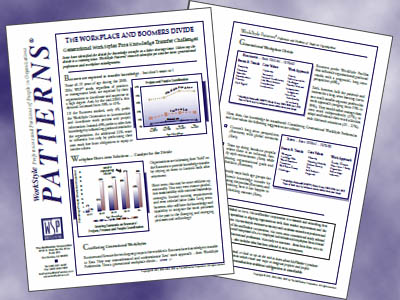
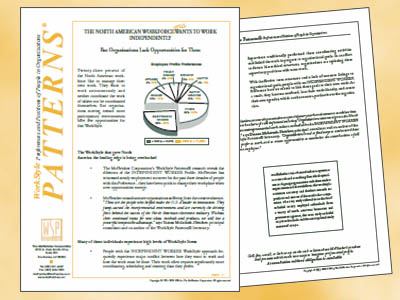
The North American Workforce Wants to Work Independently
Twenty-three percent of the North American workforce like to manage their own work. They want to work autonomously and neither coordinate the work of others nor be coordinated themselves.
But organizations moving toward more participatory environments offer few opportunities for this WorkStyle.
Download PDFIndustry Alignment
Monumental change used to hit once or maybe twice a century. Today it’s a regular occurrence in most industries, and the question becomes, are we At the Brink, In the Midst or On the Move in relation to change?
Aligning internally and externally to meet change—rather than react to it—an organization controls its own destiny.
Download PDF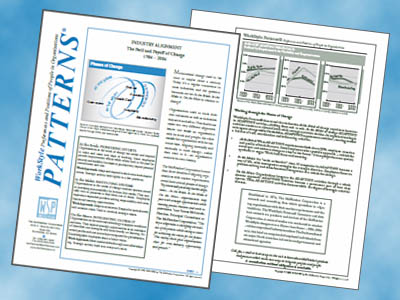
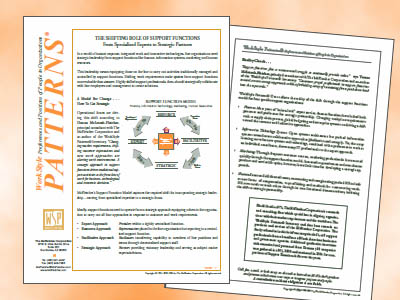
The Shifting Role of Strategic Partners
In a world of instant response, integrated work and innovative technologies, line organizations need strategic leadership from support functions like finance, information systems, marketing and human resources.
This leadership means equipping those on the line to carry out activities traditionally managed and controlled by support functions. Shifting work requirements make options from support functions more valuable than answers.
Download PDFSelf Directed or Misdirected
Self-directed work teams may defeat organizational efforts to become globally responsive.. Shared teaming – versus self-directed – for current information-based, global workplace provides a more flexible, responsive and integrated approach.
Download PDF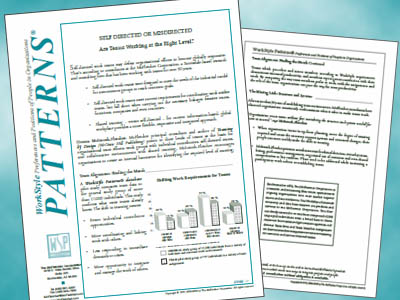
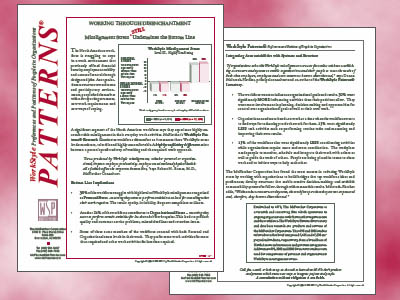
Working Through Disenchantment
A Significant segment of the North American workforce says they experience highly uncomfortable misalignment in their everyday work activities. As organizations restructure toward teams and participatory environments, people find themselves with new reporting structures, new work requirements and new ways of coping.
Download PDFThe Workforce Says Flexibility Rules
Gone are the days of the big corner office, administrative assistance and individual assignments. Today’s workplace offers 4’x5′ cubicles or virtual offices, laptop computers, BlackBerry devices, lots of teamwork and customer/supplier partnering.
The net effect is a workplace where positions are defined by flexibility and responsiveness – the ADAPTING WorkStyle Profile.
Download PDF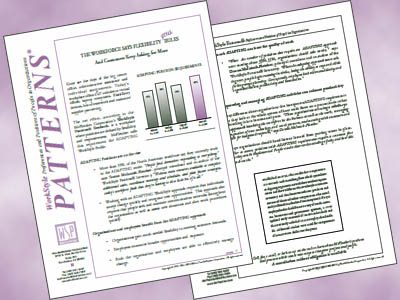
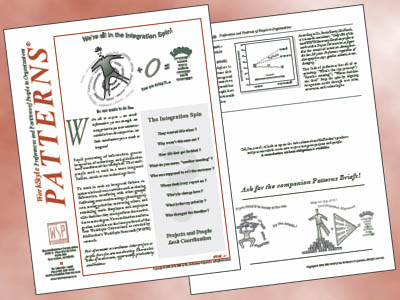
We're All in The Integration Spin
We’re all in a spin – too much information yet not enough, too many priorities yet more initiatives needed to beat the competition, too little coordination yet so much to integrate!
Rapid processing of information, greater integration of technology, and globalization have transformed the workplace. The result: people need to work in a more integrated fashion, much as our technology does.
Download PDFIf You Think it is Lonely at The Top, Try The Middle!
Over the past two decades, top management has increasingly expected middle managers to coordinate projects and people. This shift away from organizational influencing of goals and directions has left many middle managers feeling confused and unappreciated. Four factors drove this shift in middle management’s role…
Download PDF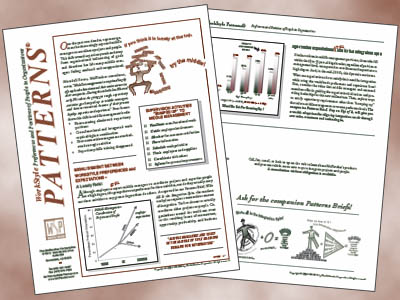
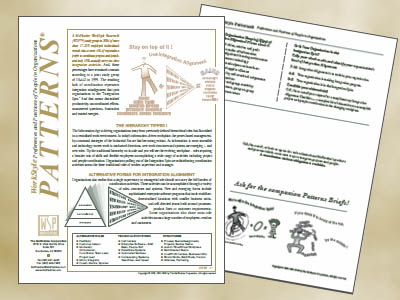
Stay On Top of it! Use Integration Alignment
The Information Age is driving organizations away from previously defined hierarchical roles that flourished in a centralized work environment. In today’s information-driven workplace, the power-based management-by-command strategies of the Industrial Era are fast becoming extinct.
As information is more accessible and technology moves work in uncharted directions, new work structures and systems are emerging … and new roles. Tip the traditional hierarchy on its side and you will see the evolving workplace
Download PDF